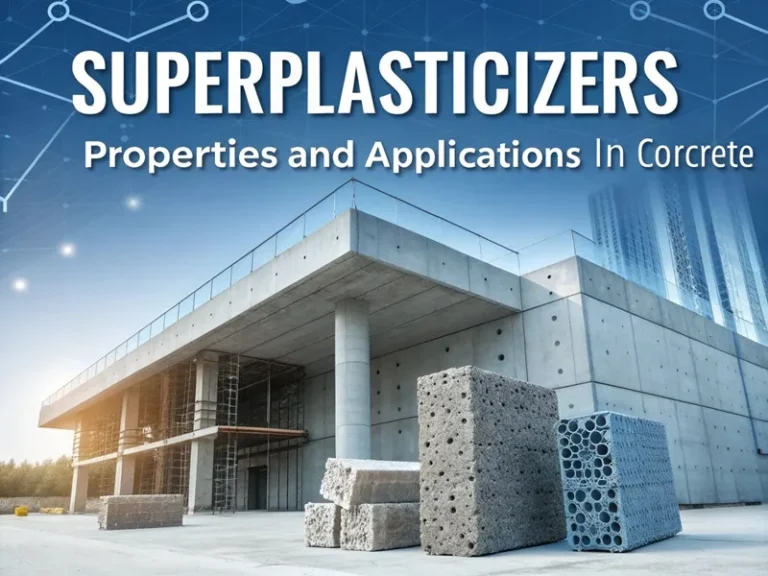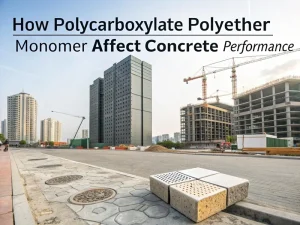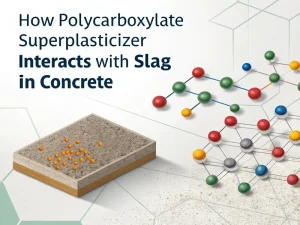Blog

In the field of modern architecture, superplasticizers have become a revolutionary additive that fundamentally changes the performance of concrete. These compounds, also known as high-performance water reducers, can produce high-performance concrete (HPC) with unprecedented workability, strength, and durability.
This article deeply explores the scientific basis, mechanism of action, and profound application of high-efficiency water-reducing agents in contemporary concrete engineering.
High water reduction rate: Superplasticizers can reduce the moisture content by up to 30%, making concrete denser without affecting its workability.
Improve work performance: They can produce high-fluidity concrete, making it easier to pour and compact, especially in complex shapes and crowded steel reinforcement areas.
Enhance strength and durability: With the decrease of water cement ratio, the compressive strength of concrete is higher, and its resistance to environmental factors is stronger.
Compatibility: Superplasticizers can be used for various types of cement and aggregates, making them suitable for different concrete mixtures.
Reduce segregation: These additives help maintain the uniformity of the concrete mixture and reduce the risk of segregation.
Structure: Comb-like polymer with polycarboxylate backbone and polyethylene glycol side chains
Advantages: High water reduction rate (25-40%), good slump retention, low dosage requirements (0.1-0.3%), no formaldehyde.
Application:
Self-compacting concrete (SCC).
Ultra high performance concrete (UHPC).
Structure: Sulfonated Naphthalene Formaldehyde Polymer
Advantages: High cost-effectiveness, compatible with various types of cement, water saving up to 15-25%.
Structure: Sulfonated melamine formaldehyde resin
Advantages: High early strength, heat resistance, and alkali resistance.
Application: Prefabricated concrete.
Source: by-products of papermaking.
Advantages: Low cost, reducing water consumption by 5-10%.
Application: Low-cost option for large-volume concrete.
Biobased high-efficiency water-reducing agent:
Researchers are developing superplasticizers using renewable resources such as lignin and cellulose to reduce dependence on petrochemical products.
Compatibility of recycled materials:
The superplasticizer optimized for recycled aggregate concrete has improved the workability of waste-derived materials.
Intelligent multifunctional admixture
Self-healing additives:
Superplasticizer integrated with microencapsulated healing agents for autonomous crack repair.
Thermally responsive polymer:
PCE with temperature-sensitive side chains can regulate viscosity in hot climates.
Superplasticizer designed by artificial intelligence:
Machine learning models are used to predict the molecular structure of specific project requirements.
IoT monitoring:
Intelligent additive that communicates curing progress through embedded sensors.
Nano-enhanced formula:
Nano silica mixture: improves strength and reduces permeability.
Superplasticizers redefine the possibilities of concrete, making structures that were once thought impossible possible possible. Their unique performance – from reducing water to maintaining slump – drives the construction industry towards higher strength, durability, and sustainability.
As we move towards smarter and more environmentally friendly infrastructure, the development of high-efficiency water-reducing agents will continue to play a critical role, combining advanced materials science with engineering innovation, from skyscrapers that touch the clouds to bridges that span the ocean.

How Polycarboxylate Polyether Monomer Affect Concrete Performance
Blog How Polycarboxylate

How Polycarboxylate Superplasticizer Interacts With Slag In Concrete
Blog How Polycarboxylate